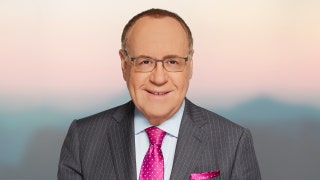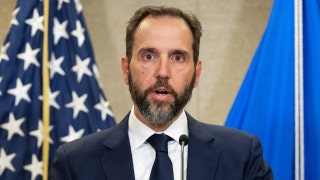"Then there's the problem of rising costs. We spend one-and-a-half times more per person on health care than any other country . . . . health care represents one-sixth of our economy . . . Everyone in this room knows what will happen if we do nothing. Our deficit will grow. More families will go bankrupt. More businesses will close. More Americans will lose their coverage when they are sick and need it most. And more will die as a result." -- President Obama in his address to a joint session of Congress on health care on September 9, 2009.
A number frequently tossed around is that a 1/6th of our nation's income is spent on health care. That number comes from $2.2 trillion in reported health care spending out of an almost $14 trillion economy. The President cites those statistics as evidence that the government needs to step in and keep health care spending under control. Yet, there are problems with both claims: The health care costs used in the debate have been inflated by double counting and further distorted by price controls, and the recent growth in U.S. health care expenditures has actually been less than in countries where the government pays for most health care.
First, take the double counting. The $2.2 trillion number includes not only the direct spending by insurance companies, individuals, and the government on health care, but it also includes the spending on buildings and medical equipment for doctors and hospitals. As should be obvious, you can't count both the money paid by patients for using an MRI and then also count the money that the hospital pays for the MRI. After all, payments for MRI scans typically cover the costs for purchasing the machinery.
The $2.2 trillion number measures all the money "going into the hands of the major actors in the health sector (providers, suppliers, insurers)," Dr. Joseph Antos, the Wilson H. Taylor Scholar in Health Care at the American Enterprise Institute, told FOXNews.com. It "is not a measure of the share of the economy going to services actually produced during the year."
There are also accounting problems with the money spent on research. The total health care cost figure includes the entire National Institute of Health budget and a large percentage of the National Science Foundation. But much of this money has nothing to do with health research and some is recouped through the products the research creates.
Some of the National Institute of Health money is used for funding the general operation of universities. Professor Bob Hansen, the Senior Associate Dean at the Tuck Business School, notes: "'overhead' rates on grants from places like the NIH [run] close to 50%, there is also a lot of funding of general university overhead in the NIH budget. Cross country comparisons are rendered problematic when we realize that other countries fund their universities through direct payment rather than through the U.S.'s reliance on 'indirects.'"
This double counting adds up – about $363 billion. Rather than about 1/6th of GDP, or about 16 percent, going to health care expenditures, the right number is closer to an 1/8th, about 13 percent of GDP. Suddenly the gap with other countries doesn't seem as large. Take France, which spends about 11 percent of its GDP on health care.
The gap with other countries gets even smaller when one takes into account their use of price controls on products such as pharmaceuticals. Americans spend almost twice as much per person on drugs as the average for other countries. U.S.-based drug companies spend vast sums to develop new drugs, and Americans pay market prices for them. Once developed, drugs are reasonably inexpensive to produce and reproduce, and price controls in other countries lower prices so that they often only have to cover the cost of manufacturing and distribution. Other countries thus "free-ride" on the research that we make in developing new drugs, drugs that save lives around the world.
If Americans spent as much for drugs as other countries, we could reduce our health care expenditures by another percentage point. But there is a real cost to this. Over the long haul, companies would not keep developing new drugs unless they can recoup the massive costs of research and regulatory approval. Lives would be lost around the world. Americans might feel justifiably outraged for picking up this drug research tab for the rest of the world, but instead of putting price controls on our own drugs, the solution might be to get rid of government regulation in other countries.
A major issue currently is how costs have been changing over time. As the president said in his recent address to Congress, control over rising health care costs has been a major motivation for government provided insurance as well as for the many regulations to eliminate "waste" in health care. "The only way I can get medium-and long-term federal spending under control is if we do something about health care. Ironically, health care reform is critical to deficit reduction," said Obama.
The Organization for Economic Co-operation and Development (OECD) collects data on health care expenditures for 30 countries. Take the last decade the data are available, from 1998 to 2007. During that time, per capita health care expenditures in the US rose on average by 7.2 percent per year. Expenditures for other countries actually rose on average by a percentage point more per year, 8.2 percent. Fourteen of the 24 countries beside the U.S. that had data over these years had a larger growth in health care spending that the U.S. A similar pattern occurs over the last twenty years.
For the average OECD country in 2007, government expenditures made up about 72 percent of all health care expenditures. At 45 percent, the U.S. is tied for the lowest share. Government spending made up more than 80 percent of health care spending in about a third of the countries. But making the US more like other countries and giving the government an even greater role doesn't seem to be the key to reducing costs. Indeed, the reverse is true -- countries where government has the highest share also faced the biggest increases in per capita expenditures. Using all the data available from 1960 to 2007 and accounting for per capita income as well as other factors, each one percent increase in a government's share of health care expenditures increases health care expenditures by about 0.4 percent.
But beyond the level of costs and how quickly they are increasing, there is another larger question: why should we really care? As we get wealthier, why should Americans avoid spending more on bigger houses or nicer cars or better health care? Why not be happy that we can now afford hip replacements in old age and diagnose cancer earlier? During many recent years Americans have spent even more money on housing than on health care, but, by itself, that doesn't show that too much money is spent on housing.
John R. Lott, Jr. is a FOXNews.com contributor. He is an economist and author of "Freedomnomics."








































